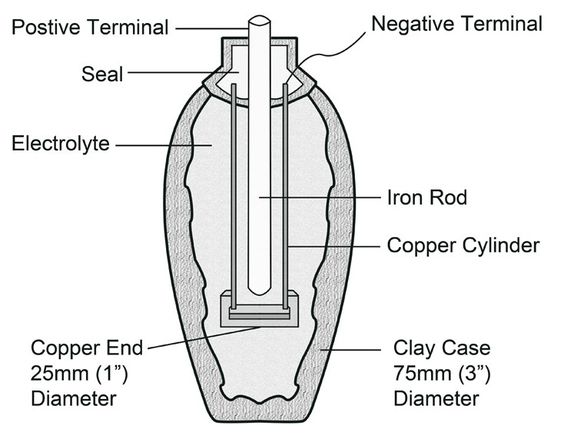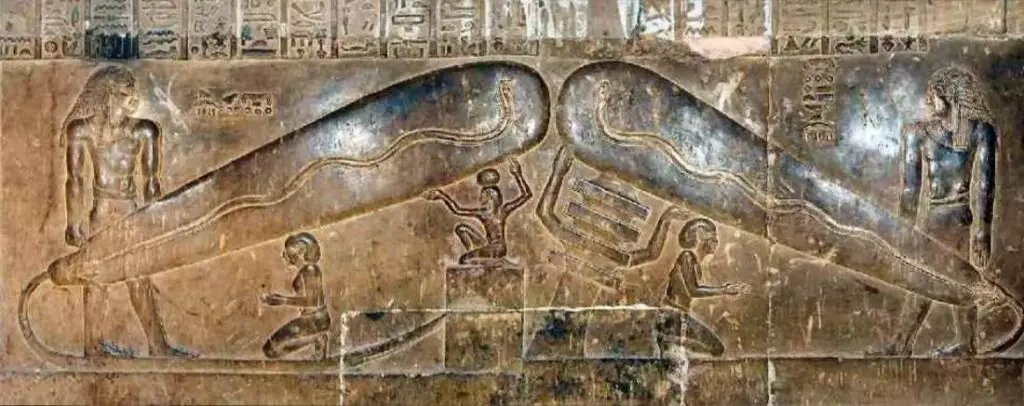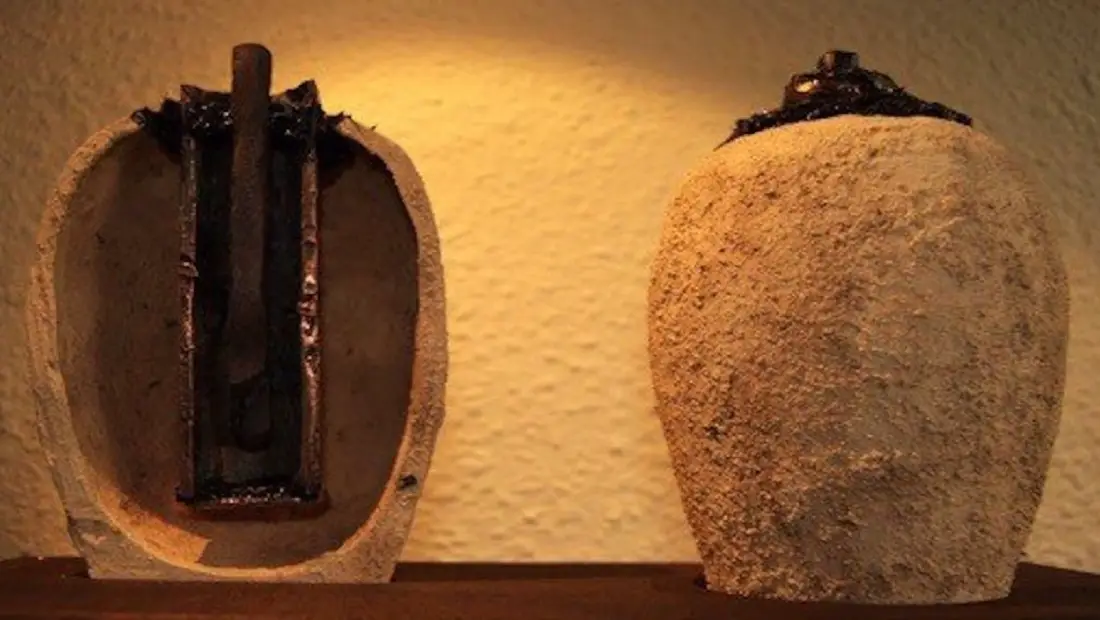The Baghdad Battery is also known as the Parthian Battery and is believed to be one of the oldest battery known to man.
Baghdad Battery is around 2,200-year-old (from the Parthian period) which comprises of a ceramic jar, a tube of copper, and a rod of iron.
It was found in the year 1936, in a village called Khujut Ranu just near Baghdad, Iraq.
Its origin and purpose remain unclear, and further evidence is needed to know what purpose it served. Some researchers believe that the object functioned as a galvanic cell and could possibly be used for electroplating, or some kind of electrotherapy.
But there is no electroplated object known from this period. An alternative explanation is that it functioned as a storage vessel for sacred scrolls.
Location Where Baghdad Battery Was Found
So the question arises how are 2000 year old clay jars called a battery? Are they actually a battery?
After unearthing, the Baghdad Battery was kept in the Baghdad Museum where two years later, while casually inspecting the artifacts in the museum Wilhelm Konig a German archaeologist stumbled upon this clay jar which had a unique assembly closely resembling a galvanic cell.
Dating this batteries to be from the third century BC, he publish a paper pointing out that they could have been batteries used for electroplating. The basis of his claim was his observation of a number of very fine silver objects from ancient Iraq, plated with very thin layers of gold, and speculated that they were electroplated.

If the jar is to be filled with an acidic liquid, such as vinegar or grape juice the acidic liquid permits a flow of electrons from the copper tube to the iron rod when the two metal terminals are connected.
This is basically the same principle that was discovered by Galvani 2,000 years later and that Volta successfully harnessed into the first modern battery a few years later.
PURPOSE
Whether or not the artifacts were in fact used as batteries is highly contested by archaeologists and for what the resulting electric current was used for is also a complete mystery as we have no historical records from that time.
Many experiments with the replicas of the Baghdad Battery have been made and were able to generate 1.5 to 2 volts.
Although this is not much but many theories suggest that several batteries could have been linked together to generate a higher voltage for electroplating gold to a silver surface.
More experiments with several Baghdad-type batteries have shown this to be possible. But such evidence of their use for that purpose is yet to be found.
Where are Baghdad Batteries today?
There were around 12 Baghdad batteries kept at the National Museum of Iraq, which is currently closed because of 2003 looting which had somewhere between 14,000 and 15,000 artifacts looted that is almost half of it’s collection stolen including the original Baghdad Battery.
No one knows today where these batteries are. Eventually, after years of searching around 7,000 artifacts were returned to the museum but Baghdad Battery was not in that list.
These are by now almost certainly sold on the black market. To date, no one has the faintest clue where they might be.
Baghdad Battery and Dendera Light Bulb

There is a claim that Egyptians had light bulbs which were powered by batteries made of jars they have ostensibly received from space aliens.
Though the reality is that there is a panel which comprised of five stone relies in the Temple of Hathor in Dendera, Egypt shows the mythical delusion of lotus flower spawning a snake held aloft by pillar.
There was a theory of “Dendera Light Bulb” and “Baghdad Battery“ that there’s a connection between them which made a large news on the social media recently.
It’s as if the internet went out of crazy ideas and recycling the old ones. In reality, there was no connection between them.
There were no traces of batteries found in Debdera, Egypt which is over a 1,000 miles from Baghdad where the battery was found.
MEDIA TESTS OF VIABILITY
Om the third episode of 1980 British Television Series, Arne Eggebrecht created a voltaic cell using a jar which he filled with grape juice to produce half a volt of electricity to demonstrate for the program that jars used this way could electroplate a silver statue in few hours using a gold cyanide solution.
He also speculated that museums could contain many mislabelled items a gold when they merely were electroplated.
The Discovery Channel program MythBusters built replicas of these jars to see if it is possible for them to have been using electroplating.
On MythBusters 29th episode which was aired on 23rd March 2005, ten hand-made terracotta jars were fitted to act as batteries.
For the electrolyte lemon juice was chosen so as to activate the electrochemical reaction between the copper and iron.
When connected in series the batteries produced 4 volts of electricity. When they were linked in series the cells had enough power to deliver current to electroplate a small token and also to deliver current to acupuncture type needles for therapeutic purposes, but it was not quite enough to deliver and electric shock to MythBuster’s co-host Adam Savage.
Archeologist Ken Feder made a comment on the show stating that no archaeological evidence has been found either for connections in between the jars or for their use of electroplating.
Even though quite a lot of research has been done related to these many engineers and archeologists state that there are a number of things that quite don’t add up to the story.
Most of the authors believe it of being from the Parthian Period which was some time between the 250 BC and 225 AD.
And those who have a knowledge of art claims that these pot structures are made in style of a people who were called the Sassanians who lived from 250 – 650 ADor so.
Many theorize that there could be more of such devices in the world but if it is assembled because of the parts being so simple, it could easily be mistaken as an everyday use product.
For now the story of Baghdad Battery is just a story. The claim of it being used as a power source and the fact that no one really knowns when and where the object came from should alone be a great source of caution while discussing it.

